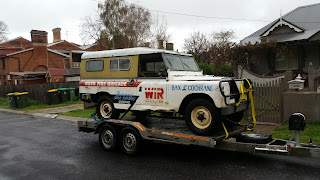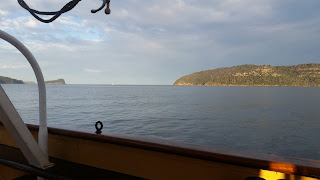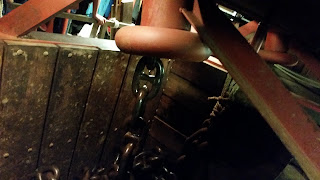Enter the laboratory power supply. This one is a fairly cheap one that I picked up off ebay a couple of years ago. It's noting to write home about but it is more than enough for this job. The reason it will work for this is that I can set it to output a maximum of 13.8V which is the standard charging voltage for lead acid batteries. It also has a constant current mode which would be useful for smaller batteries which should be charged slower, but a big one like this can probably handle as much as this relatively small supply will provide.
I just used a set of jumper leads to connect the battery as they are all that I have that will fit the posts built into the battery.
Here we are after about 1/2 to 3/4 of an hour. The battery is still accepting .52A of current into it at the full charging voltage of 13.8V which means that it is essentially full. Certainly close enough for me. Tomorrow or the day after I am going to pull the 2nd battery out of the Land Rover and see if it will charge up. The previous owner said that it didn't charge for him but I want to see exactly what happens as sometimes a "dead" lead acid battery can be brought back to life.
I will leave this battery on charge until I go to bed tonight to trickle it up as much as it will, then I will take it off the charge to reduce the risk of something going wrong, boiling, hydrogen production, etc.
Cheers,
Rex
























































